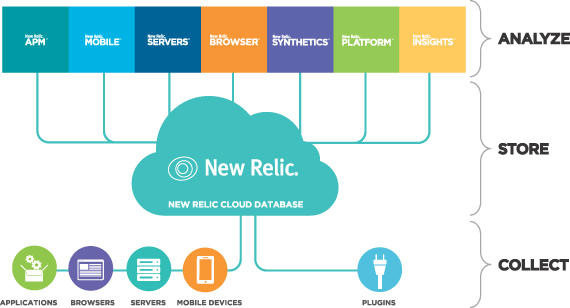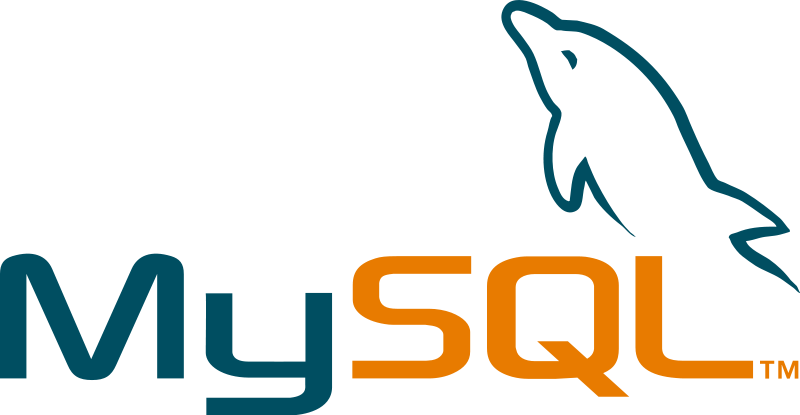I am text block. Click edit button to change this text. Lorem ipsum dolor sit amet, consectetur adipiscing elit. Ut elit tellus, luctus nec ullamcorper mattis, pulvinar dapibus leo.
|
Let us Read for you.
|


I am text block. Click edit button to change this text. Lorem ipsum dolor sit amet, consectetur adipiscing elit. Ut elit tellus, luctus nec ullamcorper mattis, pulvinar dapibus leo.

Latest Technology DevOps: Expectations vs. Reality
Even when DevOps adoption is accelerating in both web-native organizations and big enterprises, confusion continues about what does it exactly means? Is DevOps a movement, a culture, a philosophy, an approach or a mix of these things? Or is DevOps different to different people? So, here is a complete guide to DevOps for those of you who have just started your journey in DevOps.
What Is DevOps Exactly?
DevOps is defined as a combination of software development and operations methodology to deliver services and applications. It promotes regular communication, and real-time, ongoing collaboration between IT operations teams and workflows of developers. DevOps helps businesses to serve their clients better and compete strongly in the huge market. Precisely, DevOps technologies unites software development and operations with the aim of assisting organizations to develop products with better efficiency and speed.
Why DevOps?
Although there is no “silver bullet”, sure-fire way to improve IT efficiency, but DevOps has produced results that can’t be ignored. As software development and software operations become more linked and as organizations become more reliant on the cloud infrastructure, project managers and executive should develop skills in DevOps to stay highly competitive and make sure that their teams are working at their best potential. Some more reasons to why DevOps is gaining popularity include:
- Faster Innovation, Shorter Development Cycles
With a combined operations and development team, applications are prepared for usage much faster. With shorter development cycles, an application can come much quickly in the market.
- Improved Collaboration and Communication
With DevOps, combined teams become more productive and happier. The whole process becomes more seamless as everyone works towards a single goal.
- Accelerate Resolution Time
With fluid communication and full transparency between combined teams, downtime is minimized and issues are resolved faster than before.
- Increased Efficiency
Increased efficiency speeds up the development procedure and makes it lesser prone to errors. DevOps automation can automate the procedure of testing codes, decreasing the manual work. Thus, the software engineers have more time to complete tasks that cannot be automated.
- Reduced Costs
All the DevOps advantages translate to decreased IT headcount needs and overall costs. According to a study, DevOps team needs 35% lesser IT staff and nearly 30% lesser IT costs.
Overview Of DevOps
DevOps unifies people, technology and process across IT and development in 5 core practices: plan and track, develop, create and test, deliver and monitor, and operations. While practicing DevOps, IT operations, development, security and quality engineering teams work together – breaking practices that were siloes before. Enhanced collaboration and coordination across all these disciplines reduce the time when any change is there in a system and when that change is put into production. It also guarantees that standards for reliability and security are met as a part of the procedure. And the result is better product, faster delivery and happier clients.
Expectations vs. Reality
In a recent study released on the costs and impacts of failing behind on DevOps movement, the gap between expectation of value from public cloud, containers, microservices and DevOps and what organizations can do now was explored.
Some main findings of the market survey include:
- 67% respondents weren’t confident in their abilities to deal with risks in cloud.
- 74% respondents identified the DevOps significance, but 33% only could deliver DevOps enablement only.
- 40% only found DevOps to make a positive impact, whereas 25% said it created negative or no impacts.
- 53% told they lack skills and resources to shift to DevOps
But, lack of confidence, noteworthy time investment, significant financial investment or culture change may be some reasons to keep away from DevOps, but they shouldn’t be excuses to not implement DevOps.
The Challenges Of DevOps And Recommended Approach
DevOps has earned worldwide recognition over the years and IT experts have not just given a thought to it, but they have also gone the extra mile to implement it in their organization, working towards a fully automated world. DevOps automation is one of the main pillars of the movement. But, in spite of its popularity, DevOps implementation is a challenge for some people. Let’s look at a few challenges faced during its implementation.
Selecting the Right Project
For the new DevOps teams, using DevOps for every project that comes up may seem smart. But this is not the right choice always. DevOps is not necessary always and it can sometimes slow down the whole production procedure if it is not done appropriately. You need to be cautious while choosing projects for DevOps use.
DevOps process is a completely operational strategy. It is not the right fit all the time. If you are working on a software which should gain speed from agility and is promptly expected to scale, then DevOps can be a smart option.
However, DevOps does not works well always. Don’t make it your go-to solution. If you are using older systems, it is good to stick to old processes. Don’t use DevOps technology as your blanket solution even if it does not fit.
Culture Change
During DevOps implementation, workplace culture is seen to undergo maximum change. It is one of the hardest areas to change. The workplace culture becomes ingrained slowly in the employees and workers.
Transforming culture is a process which needs lots of endurance and patience. As an organization, you should intend to create a collaborative culture. All the leaders must maintain a positive and transparent air in the workplace. The pro-DevOps should convince all co-workers of this culture’s benefits.
Giving Up All Legacy Systems
Everyone should change with time. The older applications and infrastructure can’t be used forever. Trying to flourish on the legacy infrastructure will rarely give you needed results. So, to succeed, every company should update with the newest software and technologies.
The enterprises and companies should update their current software and hardware systems. The main aim of this is phase out all the non-Devops systems ultimately in the future.
Tools Turbulence
When implementing DevOps, one gets attracted to the various available tools. They become dependent on those tools gradually to resolve even the smallest problems. Because of their attractive and new features, organizations mistakenly choose DevOps tools available for short-term use instead of long term advantages.
A few of the tools are SaaS based or open-source and users can start working after a fast trial. These DevOps tools can be adopted without supervision from authorities, but this isn’t good for the organization always. Hence, organizations should provide a DevOps tools library to the teams from which the employees can select their desired DevOps tools.
Performance Testing
Extensive testing has become more important than ever before. Thanks to DevOps technology, it has become possible to create and launch products faster. But testing your products sufficiently before launch is the need of the time.
DevOps is excellent at lots of things. But, when it comes to bugs resolutions, it has some limitations. If your bugs fixing procedure is not like your DevOps process, you will experience more failures than successes. Problems solving is the foundation of DevOps, therefore, ensure that your DevOps procedure covers debugging to rise your software performance.
Process Challenges
For people who live by rules and follow guidelines blindly, DevOps can be challenging. There are no fixed frameworks in this system to dictate to the teams on how they need to deal with a project to attain the desired goals. The employees can decide their course of actions without a structured strategy. There is no DevOps team to choose the right systems and DevOps tools that can be used by teams and individuals.
While DevOps offers more scope for responsibility and innovation and empowers the employees, it can even be quite challenging. Creating an application has lots of levels managed by various teams. When all the teams working on same app have different ways of work ethics and approach, disputes and confusion arises.
With collaboration between the teams come productivity. Breaking culture barriers to make teams work together will pave the path for your business expansion. The thought of working in collaborative manners across various teams can assist you embrace DevOps and attain your goals.
Risk Analysis
It is quite difficult to disrupt the age-old methods and replace those with the new ones. As far as risk analysis is considered, the business analysts design dashboards by scaling many reports. It is done after various calculations. Mostly, it’s simple to begin but difficult to scale. After putting things in actions, workers frequently face the problem of keeping the pace constant. Hence, adopting new methodologies involve risks largely.
Integration of DevOps tools helps us collect appropriate data and place them in one repository. There also are tools that help in creating useful metrics and reports from the collected data using particular parameters like percentage change in users volume, deployment frequency, percentage change in failed and passed deployments, percentage change in customers ticket volume, etc for a specific time period. It can help achieve an end-to-end traceability for the whole process.
Conclusion
Changes are hard at the starting, cluttered at the midpoint and magnificent in the end. In this era, if an organization fails at constant creativity or innovation it’ll be soon replaced by some better company. Changes that seem challenging and unwelcoming in the beginning will definitely pay off in the long term.
The DevOps approach is now finding room both for constant improvement and automation, two important aspects in this technological world. Transforming to DevOps process will take time as there are lots of challenges threatening teams still. But with the right strategy and come patience, you can go ahead!
I am text block. Click edit button to change this text. Lorem ipsum dolor sit amet, consectetur adipiscing elit. Ut elit tellus, luctus nec ullamcorper mattis, pulvinar dapibus leo.

I am text block. Click edit button to change this text. Lorem ipsum dolor sit amet, consectetur adipiscing elit. Ut elit tellus, luctus nec ullamcorper mattis, pulvinar dapibus leo.

I am text block. Click edit button to change this text. Lorem ipsum dolor sit amet, consectetur adipiscing elit. Ut elit tellus, luctus nec ullamcorper mattis, pulvinar dapibus leo.

I am text block. Click edit button to change this text. Lorem ipsum dolor sit amet, consectetur adipiscing elit. Ut elit tellus, luctus nec ullamcorper mattis, pulvinar dapibus leo.
0
2159
0
0
6571
0
0
3207
0
0
9474
0
0
3305
0
0
2395
0
0
3588
0








